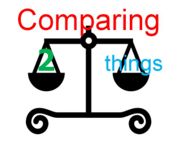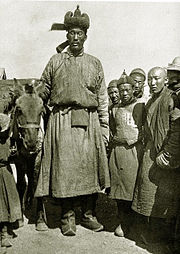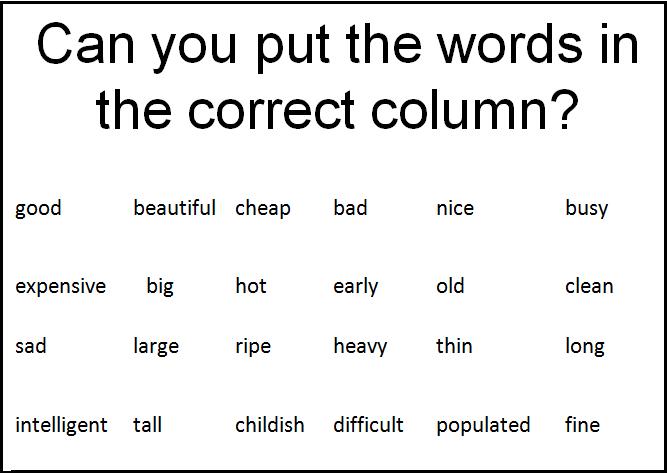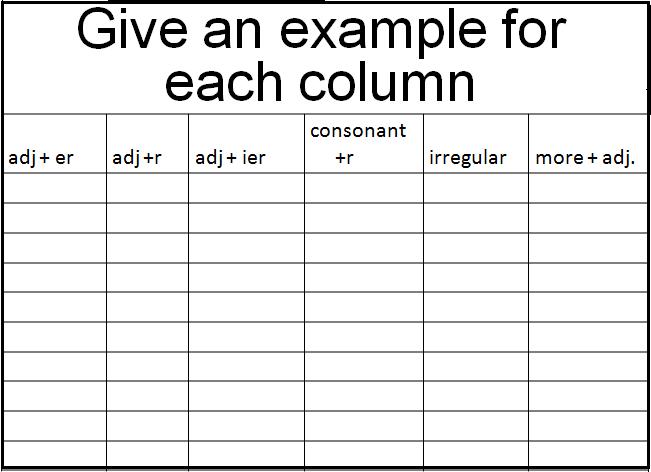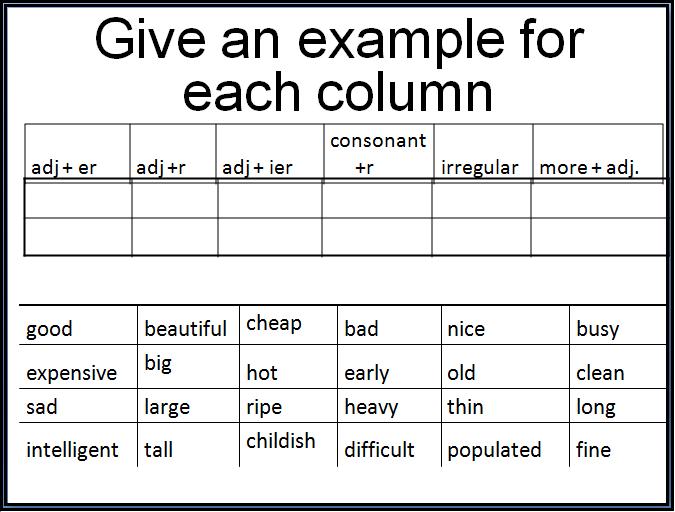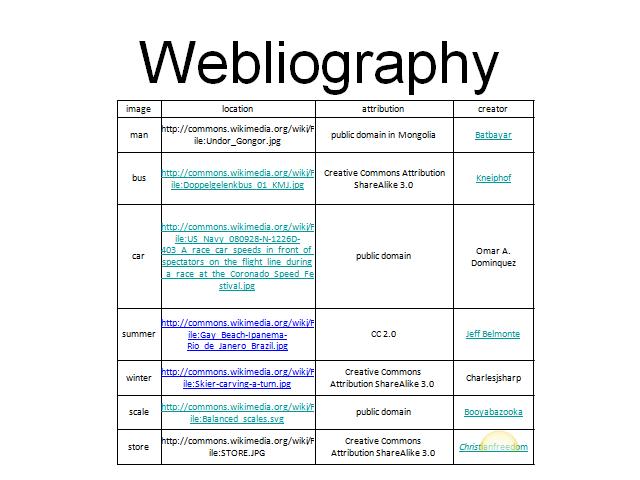Comparatives
| Click on "show" to open the navigation bar. | ||
|---|---|---|
| Click on the "show" link to open the navigator. | ||
| Home Page | Old Version | |
| My Sandbox | My Projects | |
| Contribution for L4C32 | Ongoing Project for L4C | |
| Contribution for L4C33 | Tutorial for Google Sites Subpage | |
Pages can be accessed non-linearly. | ||
.......................................................................................................................................................................................................Click on the arrow for the home page.
Upon Completion of this Section the Learner will be able to:
|
| Overview and Description of the Problem:
In some languages there is only one word to represent comparative and superlative adjectives. This leads to common errors among English learners. For example, in Portuguese the word 'melhor' can be translated both as 'better' and 'best'. |
Watch this movie. You can download the pdf file to read and refer to during the lesson. Pdf file to accompany the video.
| Words that describe things are adjectives.Adjectives that compare 2 things are comparatives.
There are Six Ways To Form a Comparative: Words that describe things are adjectives.Adjectives that compare 2 things are comparatives. Overview Introduction Rules:
|
Put the adjectives in the correct column in the table.
ANSWERS
| adj + er | adj + r | adj + ier | double consonant + r | irregular | more + adj |
|---|---|---|---|---|---|
| cleaner | nicer | busier | bigger | worse | intelligent |
| taller | finer | earlier | sadder | better | expensive |
| cheaper | larger | heavier | hotter | populated | |
| older | riper | thinner | beautiful | ||
| longer | childish | ||||
| difficult |
Test Your Skill
1. Qualified 2. Handy 3. Competent 4. Savvy 5. Experienced 6. Nearby 7. Compassionate 8. Skilled 9. Cheap 10. Famous I would prefer __________________________________________________________________________________________________.
|
| More Information |
The author is indebted to http://www.wikieducator.org/index.php?title=English_Language_Learners_Needs&action=edit for inspiring the layout of this page. The author is also indebted to http://www.wikieducator.org/IUT_2009_MediaWiki_Workshop/Activities for its templates.
